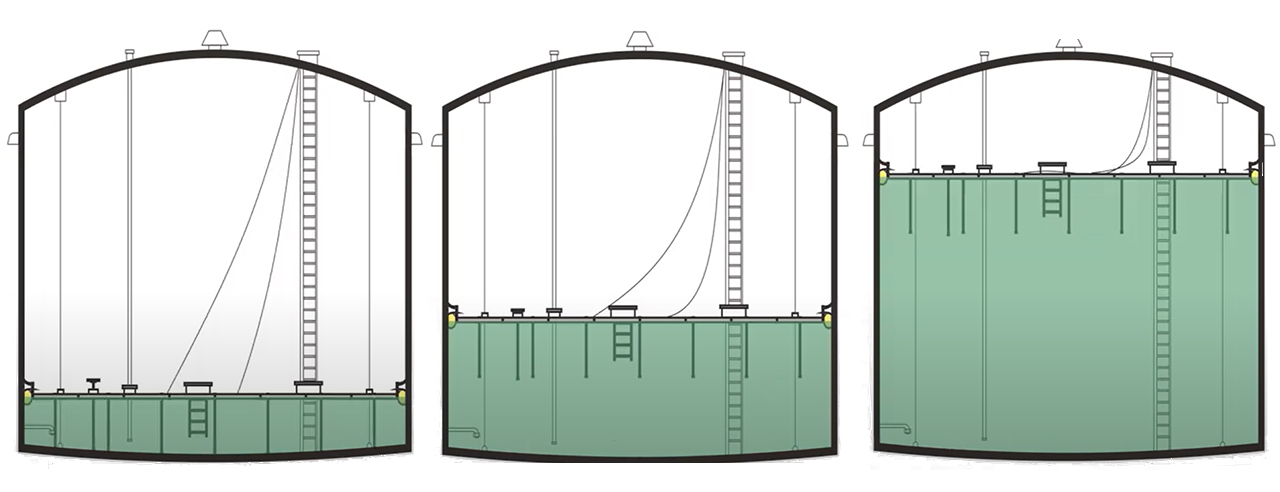Why do some floating roof tanks outperform others?
The secret often lies in the abrasion resistance of their seals
In floating roof tanks, seals endure extreme conditions. As the roof moves in response to changes in the liquid level, the seals are in constant, dynamic contact with the tank wall. This motion results in significant friction, a key source of wear on sealing materials. Abrasion resistance in seals is therefore not just an added feature – it’s essential for maintaining operational integrity, reducing emissions, and preserving stored product.

When a material faces abrasion several forces play a role, including:
- Surface Friction
Whenever two surfaces come into contact, friction is unavoidable. Abrasion-resistant materials are designed to protect themselves. They distribute the stress across a larger region or use reinforcing techniques to reduce the harm. Imagine a protective shield that absorbs all shocks while leaving the core material untouched. That is why these materials are so important in seals and gaskets, where constant movements can cause disorder. - Hardness and Flexibility:
Many people assume harder materials always resist abrasion better. A hard surface should last longer, right? Well, not.Hardness works well against scratches and dents, but it doesn’t tell the whole story. Flexibility is equally important for materials that are constantly in motion or under pressure. Considering a material so stiff that it breaks under stress, it wouldn’t last long.The best abrasion-resistant materials achieve a balance. They’re tough enough to resist surface wear and also flexible enough to take shocks and adapt to movement without breaking. This combination ensures durability in real-world applications, from seals in floating roof tanks to other dynamic industrial applications. - Elastic Recovery:Elastic Recovery is that, particular material which is capable to regain its original form even after being compressed or it gets worn out it reduces total degradation to the extent. This bounce-back ability is very important for those seals which are exposed to consistently varying conditions of motion and friction such as the seals in the floating roof tanks.
One of the widely used materials, Nitrile Butadiene Rubber (NBR), has excellent properties concerning elastic recovery. This guarantees that on every cycle by the roof moving, the material would return to its position and develop a uniformity as to minimize vapor leaks or even environmental issues associated with it.
Why Should You Care?
Abrasion resistance isn’t just a technical buzzword; it’s a practical necessity. When materials last longer, businesses save time, money, and resources. And for industries like oil and gas or manufacturing, where every seal and gasket plays a critical role, abrasion resistance isn’t optional—it’s essential.
Choosing the Right Material for Secondary Seals in Floating Roof Tanks
Selecting the proper material for secondary seals in floating roof tanks is critical to ensuring the tank’s long-term performance and safety. Saga understands the unique challenges posed by this application, including constant friction, exposure to volatile materials, and environmental stressors such as UV rays, ozone, and temperature fluctuations.
To address these challenges, R&D team of Saga has developed a special compound meeting these requirements. The SagaSeal secondary seals are made from a unique blend of Nitrile Butadiene Rubber (NBR) and PVC. This combination leverages the strengths of both materials, NBR delivers exceptional resistance to oils, fuels, and hydrocarbons, while PVC offers unmatched durability against ozone, UV rays, and weathering. Together, these materials create long-lasting, reliable seals that can resist constant friction, extreme temperatures, and environmental exposure, making them the ideal choice for floating roof tanks.
Understanding the critical role of abrasion resistance in such applications, Saga incorporates specialized additives to enhance the seal’s wear resistance. This ensures that the seals maintain their integrity and performance over time, even under challenging operating conditions.
By choosing Saga’s dual-material solution, tank operators benefit from a cost-effective and customized sealing system that prevents leaks, enhances safety, improves tank efficiency, and extends the lifespan of the sealing system. Our commitment to innovation and quality ensures that Saga’s secondary seals deliver superior performance in every application.
Take the First Step Today
Discover how Saga’s advanced material technology can revolutionize your floating roof tank operations. Connect with us to learn more about our tailored sealing solutions, let’s ensure the safety and efficiency of your tanks for years to come!
